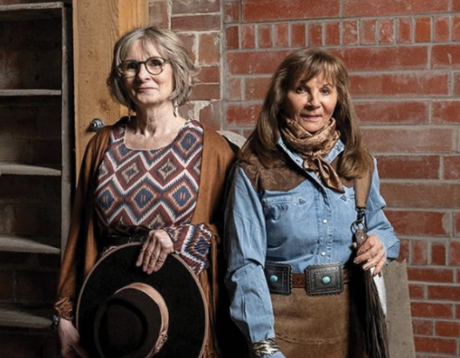Chuckwagon racing may be a controversial and dangerous sport, but Obrey Motowylo says people don’t hear about its positive aspects.
“All you hear is about is the tragedies and never about the good things,” said Motowylo.
He and his wife Angie operate a cattle ranch near Red Deer, Alta., and have about 30 horses that Obrey uses for chuckwagon racing. He told about 120 people at Grey Bruce Farmers Week in Elmwood on horse day Sunday that they “look after their horses like family.”
All of the horses he uses are big thoroughbred geldings, up to 17 hands high, weighing about 725 kilograms. He said other horses, such as quarter-horses, are too small to take the rigours of the race. Most of the horses he buys are three-or four-year-olds at the end of their careers at the race track.
“We keep racing them up to 20 years old and then let them off on pasture after that,” said Motowylo.
It’s one way that thoroughbred horses can be used instead of being sent off “to glue factories,” he said.
Motowylo grew up with horses on his parents’ ranch and began racing pony chariots in 1988. By 2004 he was a world champion pony chariot racer and decided to go into chuckwagon racing. He qualified for the World Professional Chuckwagon Association and by 2009 he was the rookie of the year.
Most of the chuckwagon races are in the Canadian Prairies, but the pre-eminent venue is the annual Calgary Stampede, where there are cash prizes up to $100,000. Motowylo has come close to the top a couple of times, but has won $50,000 prizes as well. He estimates it costs him about $60,000 a year to participate in chuckwagon races, which are now sponsored.
There are two outriders for each wagon pulled by four horses. Each race starts with an outrider tossing two tent poles — representing the tent — and a barrel — representing a stove — into the back of the 545 kilogram wagon. Another outrider leads the first horse and then both outriders jump back on their horses and follow their respective wagons around figure 8 courses and then circle the track.
The sport began in 1923 at the Calgary Stampede with wooden camp wagons used for feeding hungry crews during cattle drives. Since then safety rules have changed a lot after accidents that killed horses and flipped over wagons. The wagon’s shape is now lower, wider to make it more stable and it’s all made of metal without any sharp corners. The wheels are rounded without any sharp edges and the stove rack is under the wagon now, not at the end, and higher up. Still, at the 2009 Calgary Stampede three horses died after a race and in 2007 a spectacular wagon crash resulted in the death of three horses as well. Calgary Stampede officials argue that they work closely with the Society for the Prevention of Cruelty to Animals.
Before every race all horses are checked over by veterinarians. Wooden neck yokes have been banned and there are safety cables from the wagon to the pole the horses are hitched to.
Most of the barn help for chuckwagon pros are people from Ontario and Quebec. No women race the wagons professionally.
“There’s no reason why there shouldn’t be women in this sport, it just hasn’t happened yet, maybe because it’s so physical,” Motowylo said.

Source: The Sun Times














